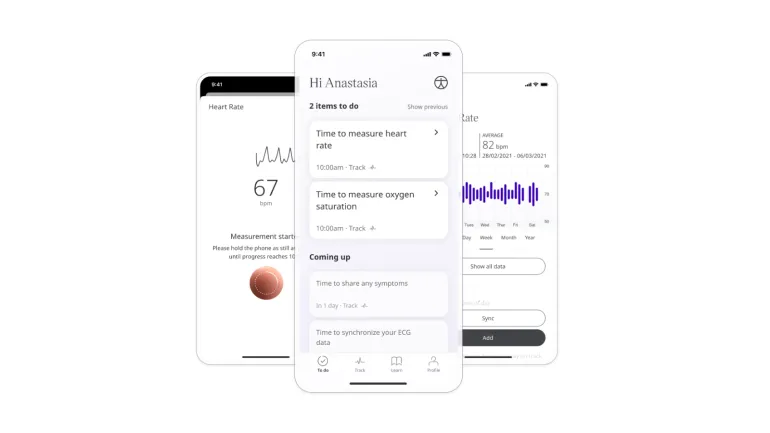
This project saw the piloting of remote monitoring of patients with heart failure across Wales using an app in their own homes. Huma’s remote patient monitoring platform shares health information between patients and clinical teams. Its technology includes a smartphone Patient App and a web-browser Clinician Portal. The Patient App captures health data, such as heart rate, blood pressure, oxygen saturation, temperature, and weight.
The aim was to better understand whether remote patient monitoring can help improve patient experience, care, outcomes and efficiency within the heart failure pathway.
Cwm Taf Morgannwg University Health Board and Betsi Cadwalladr University Health Board conducted the pilot in their areas, with heart failure patients who had been discharged from hospital using the technology to monitor their conditions.
The project was initially financed by Welsh Government’s Digital Solutions Fund, with DHEW coordinating this fund and providing project management support and advice throughout this pilot. Cwm Taf Morgannwg provided additional funding as part of the stage two project extension in 2022.
Watch the digital case studies
- Betsi Cadwaladr University Health Board
- Cwm Taf Morgannwg University Health Board
- Huma – Industry Partner
- Digital Health Ecosystem Wales (DHEW) – Project Management
- Welsh Government – Digital Solutions Fund
Catch up on all the key milestones and updates
Watch: Patient case study
31 August 2022
Read: the remote monitoring pilot is shortlisted for two prestigious HSJ Awards
Success at the HSJ Patient Safety Awards
The projects wins highly commended in the Virtual or Remote Care Initiative of the Year award.
The pilot highlighted some best practices including the need for ongoing project management and communications and how dedicated clinical time from each Health Board can support local requirements such as information governance.
The project also helped identify potential challenges for continuing and expanding the use of such technologies in remote patient monitoring moving forward. These included:
- Supporting Health Boards for sustainable funding options for successful pilot projects
- The need to streamline information governance processes to make it easier and quicker for Health Boards to adopt proven technologies
- Factoring in smartphone literacy as a potential obstacle for uptake.
The pilot demonstrated that remote patient monitoring allowed proactive identification of signs of deterioration, reduced the time taken to optimise medication, enhanced patient experience and delivered care more efficiently. This reduced hospital admissions and allowed early discharge from for some patients as they were being safely monitored at home.
By regularly checking metrics such as heart rate and oxygen levels, clinical teams could see patients which needed extra testing, support or treatment to be delivered earlier than planned.
Next steps
Cwm Taf Morgannwg have provided additional funding to support the evaluation of the programme using a Value-Based Health Care framework.
